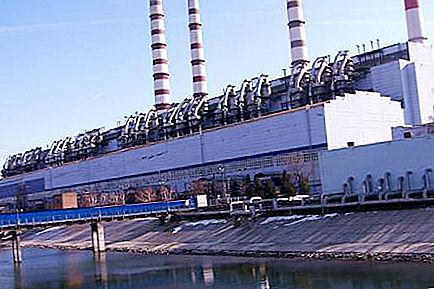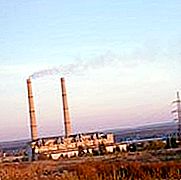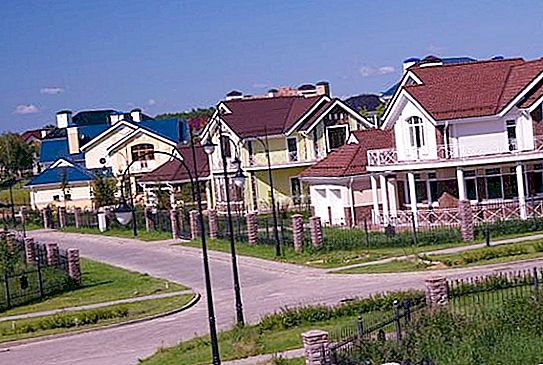Novocherkasskaya TPP is located 53 km from Rostov-on-Don. Consumers of its electricity are mainly in the southeast of the region and in the North Caucasus.

Novocherkasskaya TPP was designed for a capacity of 2400 MW, with eight power units of 300 MW each. Heating capacity - 75 Gcal / hour. Design intentions were different: 3x100 MW, 4x150, 4x200 (and stopped at 6x300 MW). Later they decided to build two more units (300 MW each). Project fuel - coal or gas, reserve fuel - fuel oil. Nowadays, Novocherkasskaya TPP is the only one that operates on coal mining and coal preparation waste (the so-called anthracite block (dust, sludge)).
Construction began in 1956. And already in the summer of 1965 the first power unit was fully commissioned. The pace of the next 7 years of construction is 1 block per year. In the winter of 1972 - 1973, construction was completed. By 2000, the gas pipeline was completed and two power units were converted to gas, the rest continued to burn fuel oil and coal dust. In 2007, the construction of the ninth block began. A fully Russian-made unit will use circulating fluidized bed technology. This technology is optimal according to the requirements of environmental protection and European emission standards. The start-up of this power unit is scheduled for December 2014. Three kilometers from the station, the village of Donskoy was built for power engineers. Today, the station abandoned the village, leaving its inhabitants to their fate.
Novocherkasskaya TPP is constantly being upgraded. In 2011, we completed the reconstruction of Don water treatment plants. The new system will use membrane cleaning technology. Prior to this, boiler water was mechanically cleaned, that is, filtered, chemical treatment was later introduced, and now it is possible to refuse it (and reagents too). This will significantly reduce the anthropogenic burden on the nature and population of the city of Novocherkassk and the entire region. Modernization and gas purification continues. New electrostatic precipitators are launched in the fifth, seventh and eighth blocks (as a result, the degree of purification was increased to 99.5%).

Yayvinskaya TPP was built near the village of Yayva Perm Territory. It belongs to the concern "E.On" from Germany. Construction began in 1955. In 1963, the first block was launched, and two years later, the remaining three. The power of the power units of the station is 1016 MW, thermal - 49 Gcal / h. Project fuel is coal from the Kizelovsky and Kuznetsk basins. Since 1987, the main fuel has been natural gas. On May 28, 2013, associated petroleum gas began to be burned from fields belonging to LUKOIL-Perm LLC. The state district power station delivers electricity to the Verkhnekamsk region and to the enterprises of the Bereznikovsko-Solikamsk industrial hub. Since 2011, the station has been operating on natural gas with a new combined cycle gas generating unit at 425 MW with high efficiency. By 2022, associated gas utilization will be increased to 95%. Yayvinskaya TPP is the last in the Russian Federation, which was transferred to the use of associated gas. Associated gas will go into the furnaces without preliminary purification.

Stavropol State District Power Station - IES, located in the city of Solnechnodolsk, Stavropol Territory. Its power is 2400 MW, heat transfer is 220 Gcal / hour. Project fuel is natural gas, emergency backup fuel oil. The share of state district power plants in the energy potential of the North Caucasus is 25%. Electricity generation volumes - 35%. The first of eight 300 MW power units was launched in 1975, and the last in 1983.
In the coming years, the construction of a new 420 MW power unit will begin. This unit will be combined-cycle with an efficiency of about 58-60% (against the efficiency of current power units at 33%). The unit will be launched in 2016, which will lead to a reduction in gas consumption, a reduction in the cost of electricity, flue gas emissions and warm water. Excess electricity will be sold to Georgia and Azerbaijan. In 2007-2009, it was planned to expand the state district power station by two 800 MW units, but due to disagreement between the customer and the builders, the work was disrupted. The terrorist act at the Baksan hydroelectric power station forced to reconsider the position on ensuring the safety of state district power plants. An integrated system is being built of several lines of defense of the state district power station against terrorist attacks.




